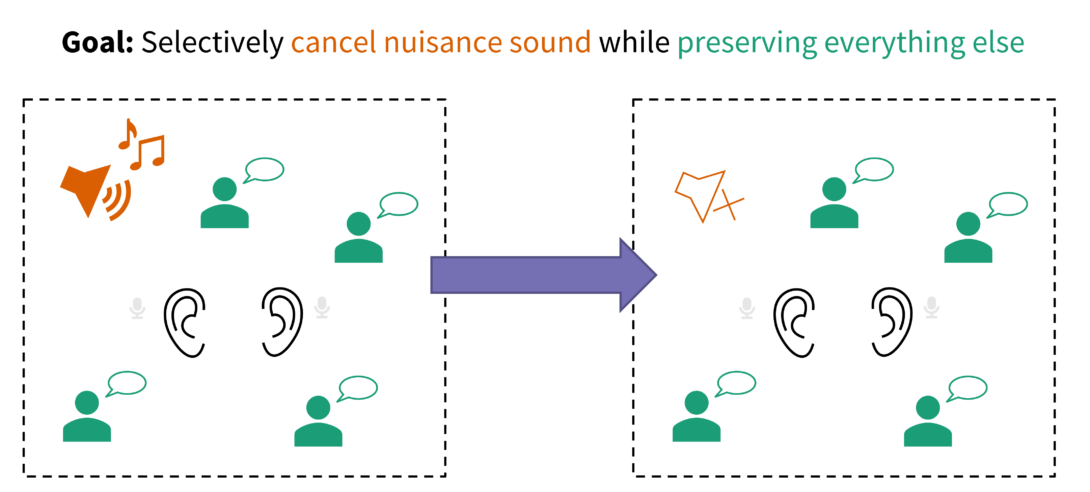Turning the Music Down with Wireless Assistive Listening Systems
This post accompanies our paper "Immersive enhancement and removal of loudspeaker sound using wireless assistive listening systems and binaural hearing devices" at ICASSP 2023 and our presentation "Turn the music down! Repurposing assistive listening broadcast systems to remove nuisance sounds" from the Acoustical Society of America meeting in May 2022.
Introduction

It is often difficult to hear over loud music in a bar or restaurant. What if we could remove the annoying music while hearing everything else? With the magic of adaptive signal processing, we can!
To do that, we’ll use a wireless assistive listening system (ALS). An ALS is usually used to enhance sound in theaters, places of worship, and other venues with sound systems. It transmits the sound coming over the speakers directly to the user’s hearing device, making it louder and cutting through noise and reverberation. Common types of ALS include infrared (IR) or frequency modulation (FM) transmitters, which work with dedicated headsets, and induction loops, which work with telecoils built into hearing devices.
Demo

We can instead use those same systems to cancel the sound at the ears while preserving everything else. We use an adaptive filter to predict the music as heard at the listener’s ears, then subtract it out. What’s left over is all the other sound in the room, including the correct spatial cues. The challenge is adapting as the listener moves.
The video below demonstrates the system using a high-end FM wireless system. The dummy head wears a set of microphones that simulate a hearing device; you’ll be hearing through its ears. The FM system broadcasts the same sound being played over the speakers. An adaptive filter cancels it so you can hear my voice but not the music.